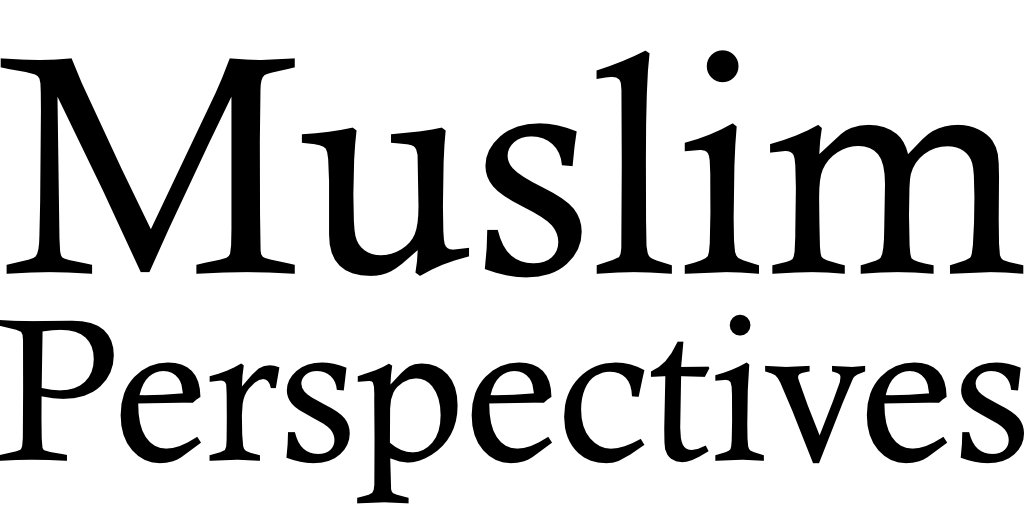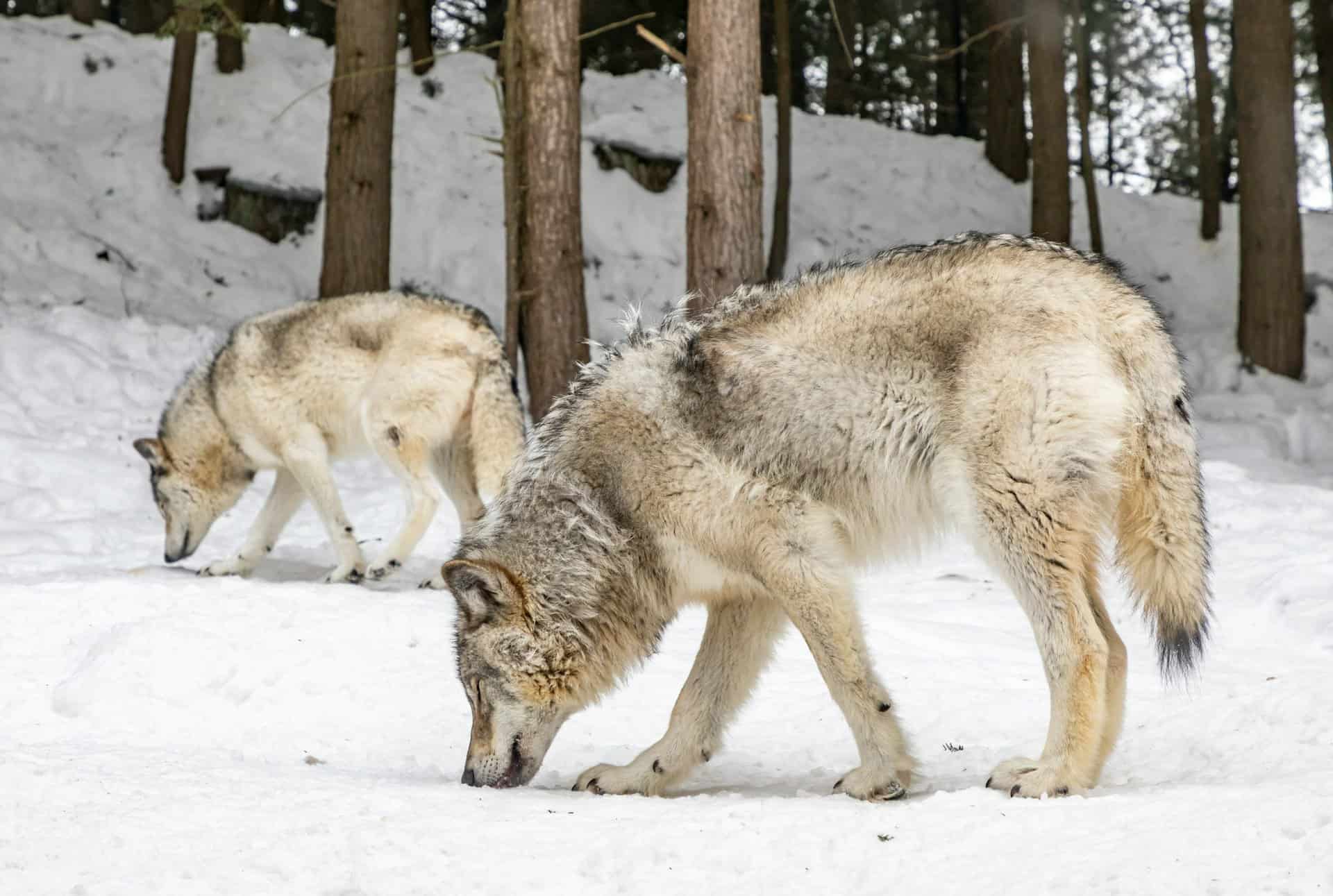Wolves as Members of the Ecosystem
Little Red Riding Hood grandma, lying helpless in bed, was no match for the ferocious wolf, who gobbled her up, as the make-believe story is told. In reality, across the globe, spanning centuries up to the present, there are factual reports of wolves attacking vulnerable humans and livestock. However, wolves do play a positive role, as members of the ecosystem. In Islam, kindness to animals is the norm, but when human lives and property are in danger, preventative measures take precedence.
Excluding humans, wolves are the most widespread species of mammals, and they occupy a variety of habitats, ranging from the frozen tundra, grasslands, mountains, temperate forests to deserts. Gray (grey) wolves are the largest extant members of the dog family. These canines – known for their enchanting eyes, powerful jaws, acute senses and haunting howls- are native to North America and Eurasia.
Due to the invasion of their natural habitats by human activities, the wild populations of wolves have decreased. One example of a population that has suffered is the Arabian wolf, Canis lupus arabs, a subspecies of the gray wolf. The encroachment of humans into the mountainous regions where the wolves roam inevitably led to conflict. Wolves attacked livestock and posed a threat to people, and in return there were retaliatory strikes.1
The Wolf in the Story of Joseph
Attention to this predatorial behavior of the wolf in relation to a susceptible human prey is referenced in the Quranic story of Joseph. The Quran specifies the wolf, dhi’b, which is known to have existed 3900 years ago, at the time of Joseph in Egypt. It was related to the gray wolf, which carries the taxonomic name C. lupus.2 The Quran in its ironclad accuracy to the minutest detail, refers to the undisputed existence and behavior of the wolf.
In the Quran, the word ‘wolf’ is only mentioned in chapter 12, Surah Yusuf, occurring three times in the story of Prophet Yusuf (a.s.). The relevant portions of the verses read: “It grieves me indeed that you should take him with you for I fear that some wolf might eat him up while you are negligent of him.”3a; “Should a wolf eat him, despite the presence of our strong group, we would indeed be a worthless lot!”3b; “Father! We went racing with one another and left Joseph behind with our things, and then a wolf came and ate him up….”3c.
In the Biblical story of Joseph, the term ‘wild beast ‘is used rather than wolf. Genesis reads: “Come now, let us kill him and throw him into one of the cisterns here; we could say that a wild beast devoured him…”4a, and “…He recognized it and exclaimed: “My son’s tunic! A wild beast has devoured him! Joseph has been torn to pieces!4b. Nevertheless, it has been deduced, from references to wolves in the bible, that they were more common in biblical times compared to today.4c
Vicious and Harmful Animals

The religious texts reveal the inherent danger of the wolf, and the Prophet Muhammad (s.a.w.) sought to protect us from its harm, as reported in an authentic tradition. The hadith says, “Five animals are vicious and harmful and are to be killed (even) inside the Sacred Precincts: the crow, the kite, the scorpion, the mouse, and the mordacious or predatory dog.”5 Another narration adds that one can kill them even in the state of Ihram. The predatory dog in the above Hadith, according to most scholars, includes the wolf. The scholars further explain that they deviate from the normal and acceptable behavior of most animals by their harm and aggressiveness to people and livestock. The wolves are seeking other than their natural prey in their environment, for whatever reason, by targeting humans and their domesticated animals. All four major Sunni schools of law agree that a wolf that is actively threatening humans or animals may be killed. Conversely, it is not permissible to kill a non-threatening wolf, especially those that live in their own ecological niche, secluded from human contact.6
Documented reports give us a more vivid picture of wolf assaults. Overall, attacks are rare, but they reveal the unmistakable nature of these predators. In India’s Uttar Pradesh state in 2024, about 30 villages were victimized by multiple wolf attacks, resulting in the deaths of 9 children and one adult, along with other injuries to children. Prior to that in 1996, at least 76 children from 50 villages were attacked. India has an estimated 3100 wolves which are widely distributed. In France, the chronicle of events from 1200 to 1920 describes almost 1,0000 fatal attacks. Across the globe, between 2002 and 2020, a Norwegian study revealed almost 500 attacks on humans by wolves.7
Protection of Wolves Through Conservation
The protection of wolves through conservation on the one hand, and public safety and the prevention of livestock predation, on the other, is nothing short of controversy. One example of this conflict of interest is in California, where gray wolves are protected by state and federal laws. The re-population of wolves and the consequent co-existence with humans is in the initial stages, and a story in the making. “We’re at the beginning of this really exciting recovery … so there’s a lot of unknowns,” said the director of the California Wolf Project.8
Switzerland is another example of how the wolf saga plays out. The return of wolves to the country was a welcome sign to the environmentalists. This year, wolf attacks on sheep and other livestock stepped up, negatively impacting the livelihood of the farmers, and in turn the entire alpine economy. Even more alarming, wolves lurked by the paths children traversed and watched them pass. Naturally, the matter was of concern to the farmers who advocated to make it easier to kill the suspected wolves, through a referendum. However, the Swiss voters in the city voted against it, and won.9
The cause of wolves attacking humans may be attributed to rabies, as a means of defense, or predatory. Wildlife biologists emphasize the value of wolves. In certain ecosystems, they are considered ‘keystone species’, meaning that they are critical to the health and balance of the ecosystem. For example, In North America, they serve as apex predators, preventing an over-population of deer and elk due to their rapid reproduction. Moreover, this has led to a reduction in deer-vehicle collisions and the spread of contagious diseases.
The environmentalist’s aim is to minimize interactions between humans and wolves. As the saying goes, “An ounce of prevention is worth a pound of cure”. One measure of prevention is to reduce the access of wolves to food in human habitations. Other critical efforts involve restricting human disturbance of the wolf natural habitat and establishing protected areas where they reside. Public awareness and educational programs are also necessary to promote the exact nature of the problem and their solutions.
With the goal of safeguarding the sanctity of life and property, the Islamic sources have singled out the culpable wolf as a matter of concern. However, this does not rule out peaceful coexistence of man and wolf, which is an Islamic perspective. To mitigate confrontations and threats, it is desirable to adopt the measures outlined by the conservationists.
REFERENCES
1) https://pmc.ncbi.nlm.nih.gov/articles/PMC12292966/
2) ((PDF) The Cryptic African Wolf: Canis aureus lupaster Is Not a Golden Jackal and Is Not Endemic to Egypt
3) Quran, 12:13, 14, 17
4a, 4b) Bible, Genesis 37: 20, 33
4c) Smith’s Bible Dictionary
5) https://hadeethenc.com/en/browse/hadith/4543
6) https://questionsonislam.com/question/how-should-we-interpret-hadith-you-may-kill-five-types-animals-wherever-you-encounter-them
7) https://www.bbc.com/news/articles/cx2n1z943zzo;
8) https://news.mongabay.com/2025/08/wolves-continued-spread-in-california-brings-joy-controversy-
9) )https://www.bbc.com/news/world-europe-59738541





